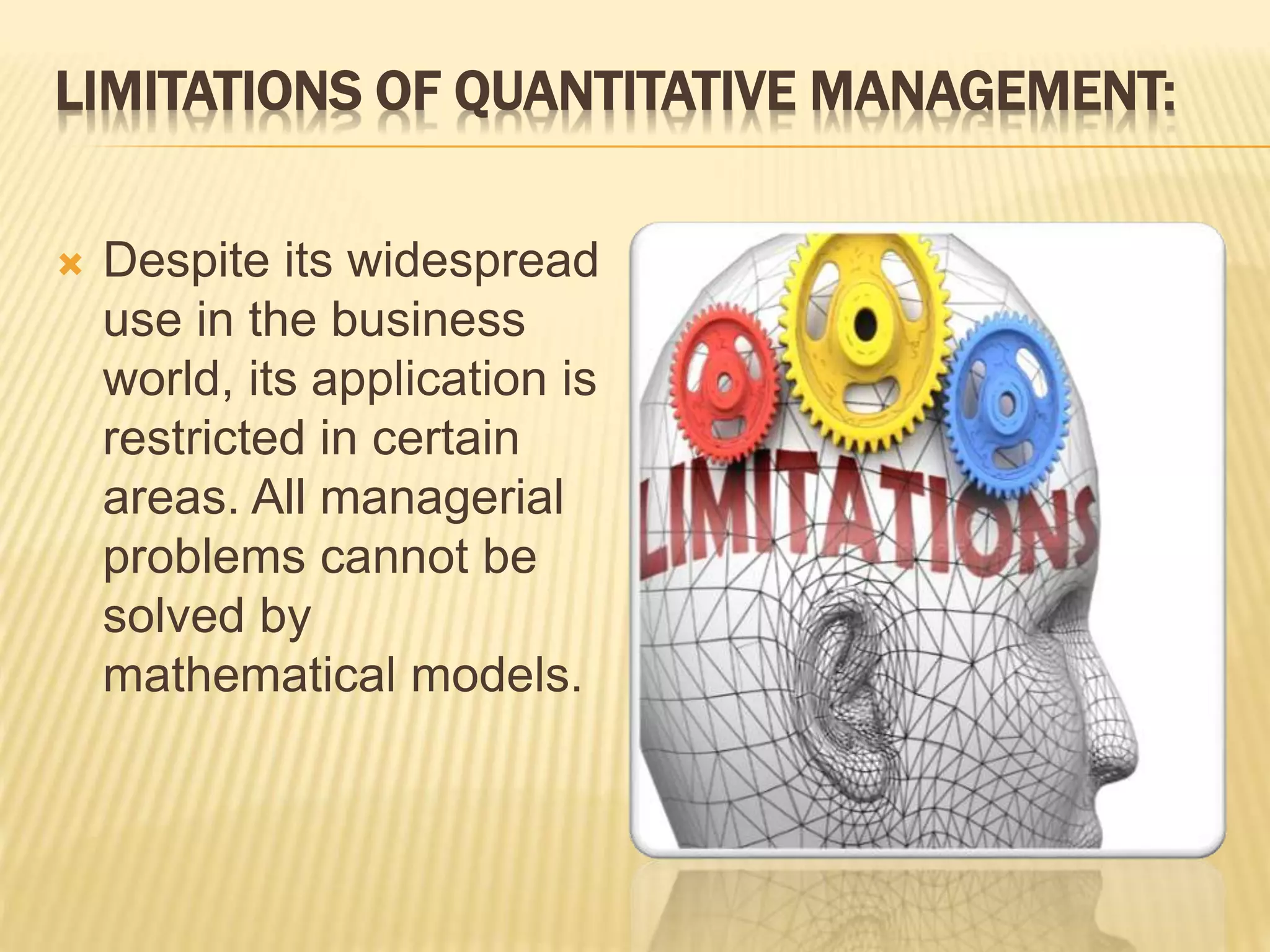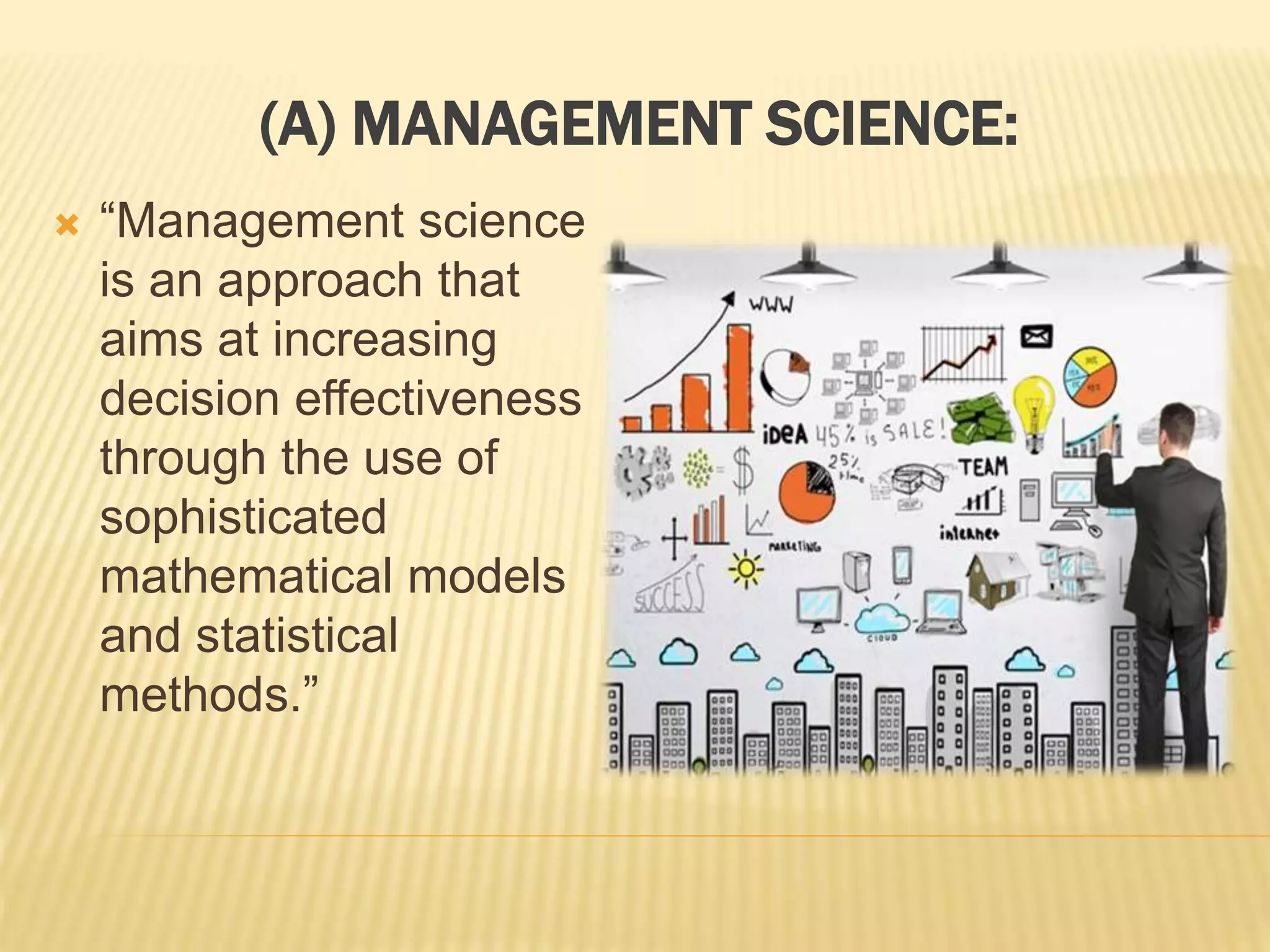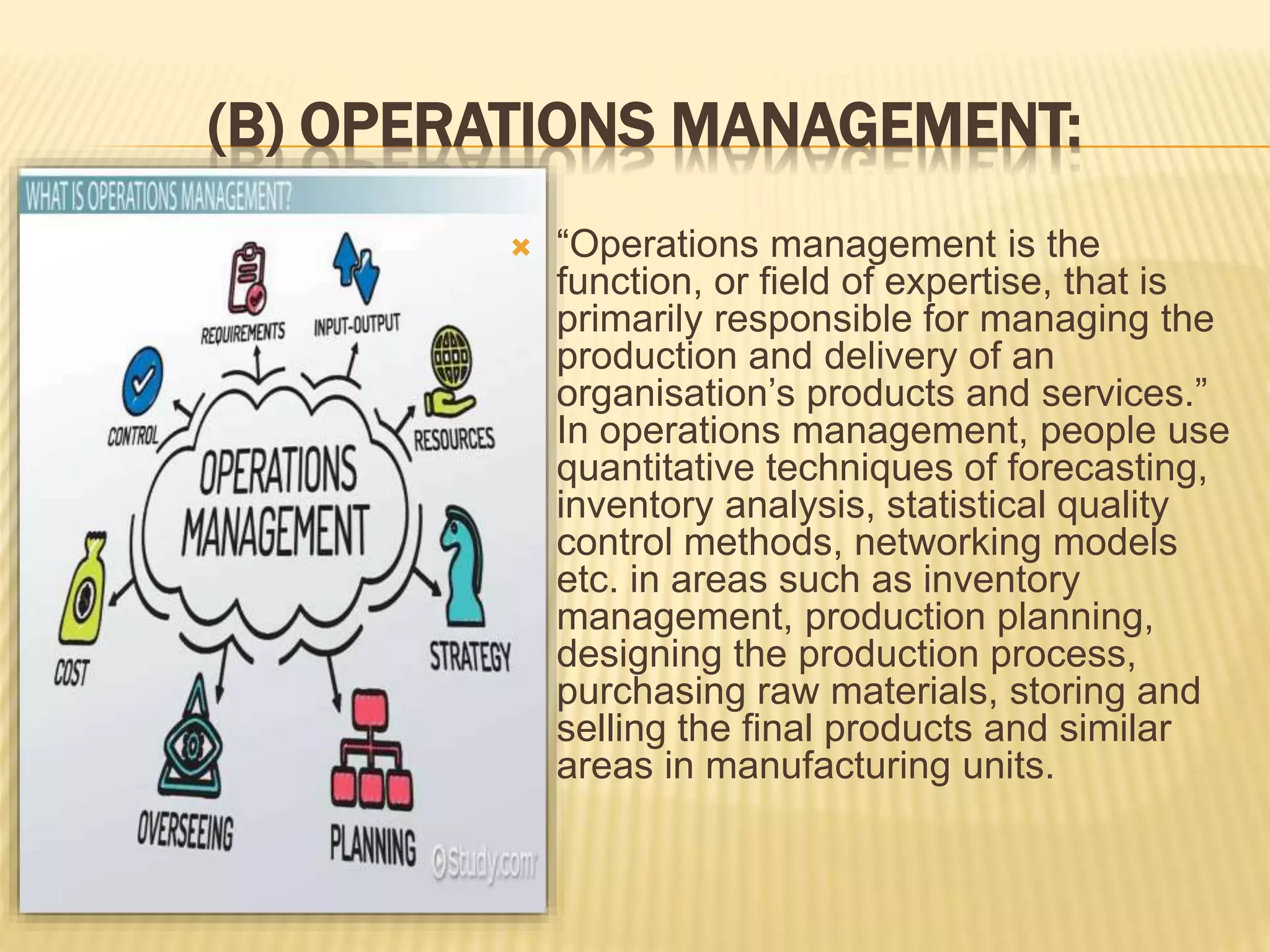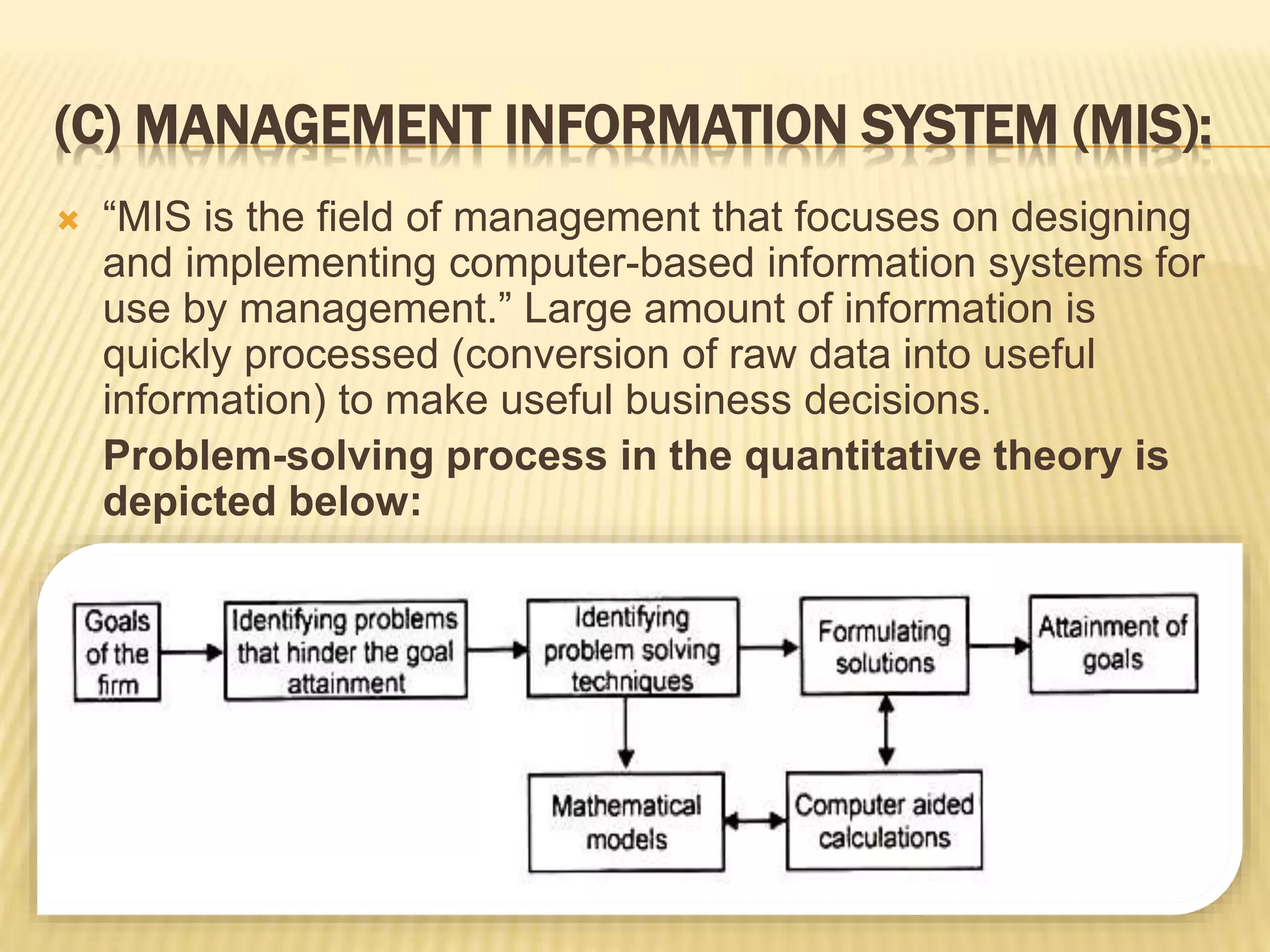What Are The Branches Of Quantitative Management
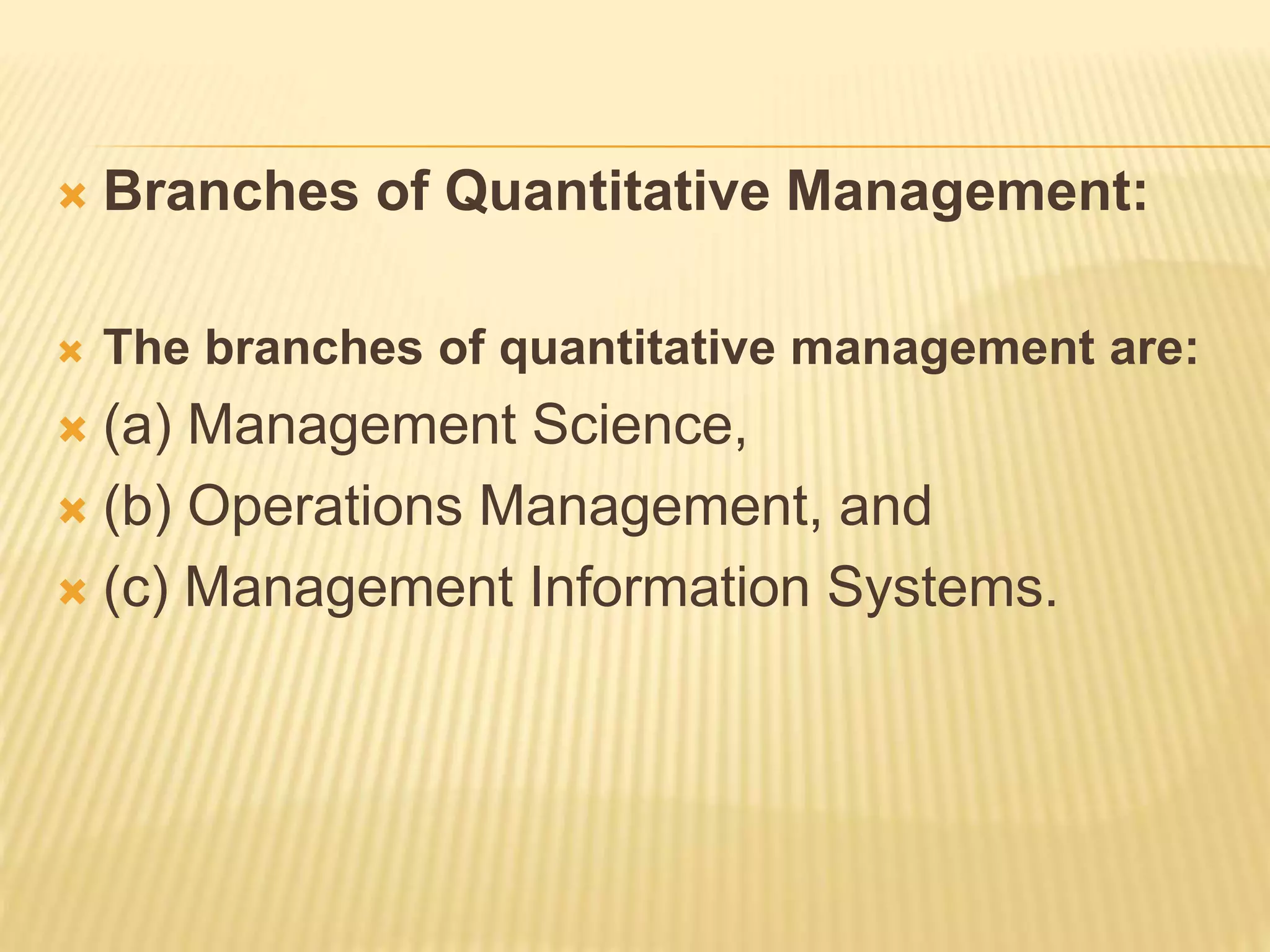
Imagine a bustling hospital, not just filled with doctors and nurses, but also analysts poring over data, optimizing patient flow, and ensuring resources are allocated with pinpoint accuracy. Or picture a global logistics company, where algorithms orchestrate a symphony of trucks, ships, and planes, delivering goods efficiently across continents. This isn't science fiction; it's the reality of quantitative management in action, a field that blends data analysis, mathematical modeling, and computational power to make smarter, data-driven decisions across industries.
At its heart, quantitative management is about using numbers to understand, predict, and improve organizational performance. But what exactly falls under this umbrella? This article will explore the diverse branches of quantitative management, revealing the powerful tools and techniques that are shaping the future of business and beyond.
The Roots of a Data-Driven Approach
The seeds of quantitative management were sown in the mid-20th century, spurred by the complexities of managing large-scale operations during World War II.
Operations research, initially focused on military logistics and resource allocation, laid the foundation for many of the methodologies used today. As businesses grew and competition intensified, the need for more sophisticated decision-making tools became evident.
The rise of computers and statistical software further fueled the growth of quantitative management, enabling analysts to process vast amounts of data and build complex models.
Branches of Quantitative Management: A Closer Look
1. Operations Research (OR)
Operations Research, often considered the cornerstone of quantitative management, is concerned with optimizing resource allocation and decision-making in complex systems. It employs a variety of techniques, including mathematical programming, simulation, and queuing theory, to solve problems such as inventory management, scheduling, and transportation planning.
For instance, an airline might use OR techniques to optimize flight schedules, minimizing costs and maximizing on-time performance. OR helps identify the best course of action when faced with constraints and competing objectives.
George Dantzig, often called the "father of linear programming," made pivotal contributions to this field.
2. Management Science
Management Science takes a broader view, applying quantitative methods to a wider range of management problems, including strategy, marketing, and finance. It often involves developing mathematical models to simulate different scenarios and evaluate potential outcomes.
Companies might use Management Science to determine the optimal pricing strategy for a new product, or to assess the risk and return of different investment options. It's about using data to inform strategic decisions across the organization.
This field emphasizes a holistic approach, considering the interconnectedness of different business functions.
3. Statistical Analysis
Statistical Analysis is a critical component of quantitative management, providing the tools to collect, analyze, and interpret data. It encompasses a wide range of techniques, from descriptive statistics to hypothesis testing and regression analysis.
Businesses use statistical analysis to understand customer behavior, identify trends in sales data, and assess the effectiveness of marketing campaigns. It provides the foundation for evidence-based decision-making.
Understanding statistical significance is paramount in drawing meaningful conclusions from data. Reliable insights rely on sound statistical practices.
4. Business Analytics
Business Analytics focuses on extracting actionable insights from data to improve business performance. It encompasses a range of techniques, including data mining, predictive modeling, and data visualization.
Companies use Business Analytics to identify opportunities for cost reduction, improve customer retention, and optimize supply chain operations. It's about turning raw data into strategic advantage.
Business Analytics is increasingly driven by big data and advanced analytics techniques like machine learning.
5. Data Science
Data Science is an interdisciplinary field that combines statistical analysis, computer science, and domain expertise to extract knowledge and insights from data. It involves a wide range of activities, including data cleaning, data wrangling, feature engineering, and model building.
Data scientists use their skills to build predictive models, develop recommendation systems, and identify patterns in large datasets. This is particularly relevant in today's data-rich environment, especially when navigating challenges that often necessitate skills in both the technical and non-technical domains.
Data visualization plays a crucial role in communicating complex findings to stakeholders.
6. Financial Engineering
Financial Engineering applies quantitative methods to solve problems in finance, such as portfolio optimization, risk management, and derivative pricing. It often involves developing complex mathematical models to analyze financial markets and instruments.
Financial institutions use Financial Engineering to manage risk, develop new financial products, and optimize investment strategies. A solid grasp of mathematics and computer programming is crucial to excel in this arena.
Black-Scholes model is a seminal example of Financial Engineering in action.
The Significance and Impact
The branches of quantitative management have revolutionized decision-making in virtually every industry. From optimizing supply chains to predicting customer behavior, these techniques provide businesses with a competitive edge.
By leveraging data and mathematical models, organizations can make more informed decisions, reduce costs, improve efficiency, and increase profitability. The application of these disciplines empowers companies to navigate uncertainty and adapt to changing market conditions.
Furthermore, quantitative management contributes to societal good by enabling more efficient allocation of resources in areas such as healthcare, transportation, and energy.
Looking Ahead: The Future of Quantitative Management
As data becomes more abundant and computing power continues to grow, the importance of quantitative management will only increase. New technologies like artificial intelligence and machine learning are further expanding the capabilities of these fields, enabling organizations to tackle increasingly complex problems.
The rise of cloud computing and open-source software has also democratized access to quantitative management tools, making them more accessible to smaller businesses and organizations. This broader accessibility to these resources allows them to be more widely used and adopted.
The future of quantitative management lies in its ability to integrate seamlessly with other disciplines, such as behavioral science and design thinking, to create holistic solutions that address both the analytical and human aspects of decision-making.
Ultimately, the power of quantitative management lies not just in the numbers, but in the ability to translate those numbers into meaningful insights and actionable strategies. It is a field that demands both analytical rigor and creative problem-solving, offering exciting opportunities for those who are passionate about using data to make a difference in the world.
